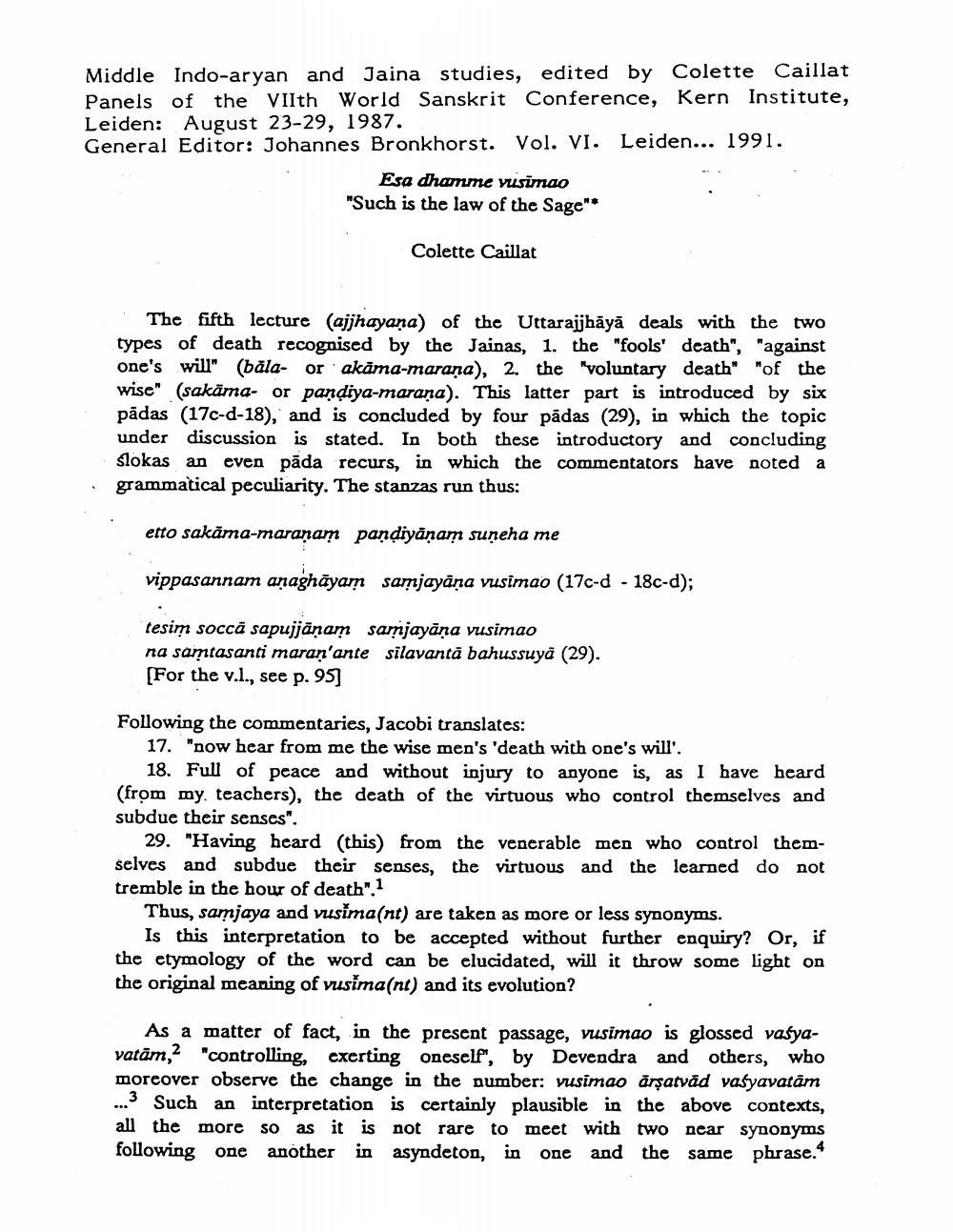Book Title: Esa Dhamme Vusunao Such Is Law Of Sage Author(s): Colette Caillat Publisher: Colette Caillat View full book textPage 1
________________ Middle Indo-aryan and Jaina studies, edited by Colette Caillat Panels of the VIIth World Sanskrit Conference, Kern Institute, Leiden: August 23-29, 1987. General Editor: Johannes Bronkhorst. Vol. VI. Leiden... 1991. Esa dhamme visimao "Such is the law of the Sage** Colette Caillat The fifth lecture (ajjhayana) of the Uttarajjhāyā deals with the two types of death recognised by the Jainas, 1. the "fools' death", "against one's will" (bala- or akama-marana), 2. the "voluntary death" "of the wise" (sakama- or pandiya-marana). This latter part is introduced by six pådas (17c-d-18), and is concluded by four padas (29), in which the topic under discussion is stated. In both these introductory and concluding Slokas an even pada recurs, in which the commentators have noted a grammatical peculiarity. The stanzas run thus: etto sakāma-maranam pandiyaṇam suṇeha me vippasannam anaghāyam samjayana vusimao (17c-d - 18c-d); tesim soccā sapujjanam samjayāṇa vusimao na samtasanti maran'ante silavanta bahussuya (29). [For the v.l., see p. 95] Following the commentaries, Jacobi translates: 17. "now hear from me the wise men's 'death with one's will'. 18. Full of peace and without injury to anyone is, as I have heard (from my teachers), the death of the virtuous who control themselves and subdue their senses". 29. "Having heard (this) from the venerable men who control themselves and subdue their senses, the virtuous and the learned do not tremble in the hour of death",1 Thus, samjaya and vusima(nt) are taken as more or less synonyms. Is this interpretation to be accepted without further enquiry? Or, if the etymology of the word can be elucidated, will it throw some light on the original meaning of vusima (nt) and its evolution? As a matter of fact, in the present passage, vusimao is glossed vasyavatām,2 "controlling, exerting oneself", by Devendra and others, who moreover observe the change in the number: vusimao ärṣatväd vafyavatām ... Such an interpretation is certainly plausible in the above contexts, all the more so as it is not rare to meet with two near synonyms following one another in asyndeton, in one and the same phrase.4Page Navigation
1 2 3 4 5 6 7 8 9 10 11 12 ... 16
